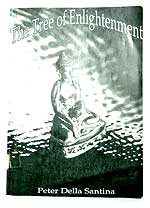Submitted by zhenliang on

An Introduction to the Major Traditions of Buddhism by Dr. Peter Della Santina
Chico Dharma Study Foundation Publication, 1997, 402 pages
Category: Buddhism, Major Traditions
The Tree of Enlightenment is a good read for those new to Buddhism and the Mahayana and Vajrayana Traditions. Dr. Peter Della Santina has spent many years in studying and teaching the Dharma and had worked as a research scholar translating 8 th Century Buddhist philosophical texts from the Tibetan. He thus brings his scholastic mind to bear in writing this book.
This is apparent right from the opening pages where he did a comparative study of modern and traditional attitudes towards Buddhism and hoped that with his book, people everywhere can approach Buddhism with a balanced view that is without prejudice and convictions. Even his approach of the life of the Buddha (Chapter Three) is to treat it as a lesson in the Dharma.
This book thus makes you think and reflect as you read. This does not mean the book is esoteric in nature. On the contrary, this book is well written in plain English with step-by-step explanations, so it is quite easy to follow the author's logical reasoning in his presentation of the various subject matter such as morality, mental development, wisdom, karma, and rebirth (Chapters Five to Nine).
Even with very deep and complex subject matter, such as the teaching of Interdependent Origination, the Three Universal Characteristics of impermanence, suffering and non-self, and the Five Aggregates of form, feeling, perception, volition, and consciousness, the author had used simple terms interspersed with examples to enlighten and enliven to such a degree that anyone new to such deep teachings can understand it. The author, you might say, had used expedient means to bring profound teachings down to the level of the ordinary person.
In the second part of the book, Dr. Peter Della Santina introduced the reader to the Mahayana School of Buddhism. He drew similarities found in both the Theravada and Mahayana Schools to show that Mahayana had its early origins in Theravada Buddhism. He then went on to expound the Lotus Sutra, the Heart Sutra and the Lankavatara Sutra to “exemplify (the) important themes and phases in the development of Mahayana Buddhism”. He devoted a whole chapter on Nagarjuna and Nagarjuna's doctrines of non-self-existence (nihsvabhavavada) and emptiness (shunyata) and another chapter on the Mind Only philosophy to indicate their importance in the Mahayana Tradition.
In the third part of the book, Dr. Peter Della Santina showed his mastery of the Vajrayana, through his long association with the Sakya Order of Tibetan Buddhism as a student of His Holiness Sakya Trizin, by skillfully demystifying the philosophy of the Vajrayana. He has deftly given us a glimpse of Vajrayana practice in the eight chapters of this book.
Dr. Peter Della Santina dealt with the philosophical and psychological aspects of Abhidharma in the fourth and last part of the book. The author began with a definition that “the phenomenological aspect of philosophy and the therapeutic aspect of psychology relate best to an understanding of the Buddha's teachings.” He went on to discuss the Abhidharmic method of introspection through analytical and synthetic approaches, the analysis and classification of consciousness, the analysis of mental states, thought processes, matter and conditionality, and ended with the thirty-seven factors conducive to enlightenment.
Covering such a wide subject matter in just 402 pages, The Tree of Enlightenment is definitely not a definitive work. It is without a doubt, however, a good read for those new to Buddhism and its major traditions. With its non-technical and minimal use of Sanskrit terminology, it is easy to read and understand.

